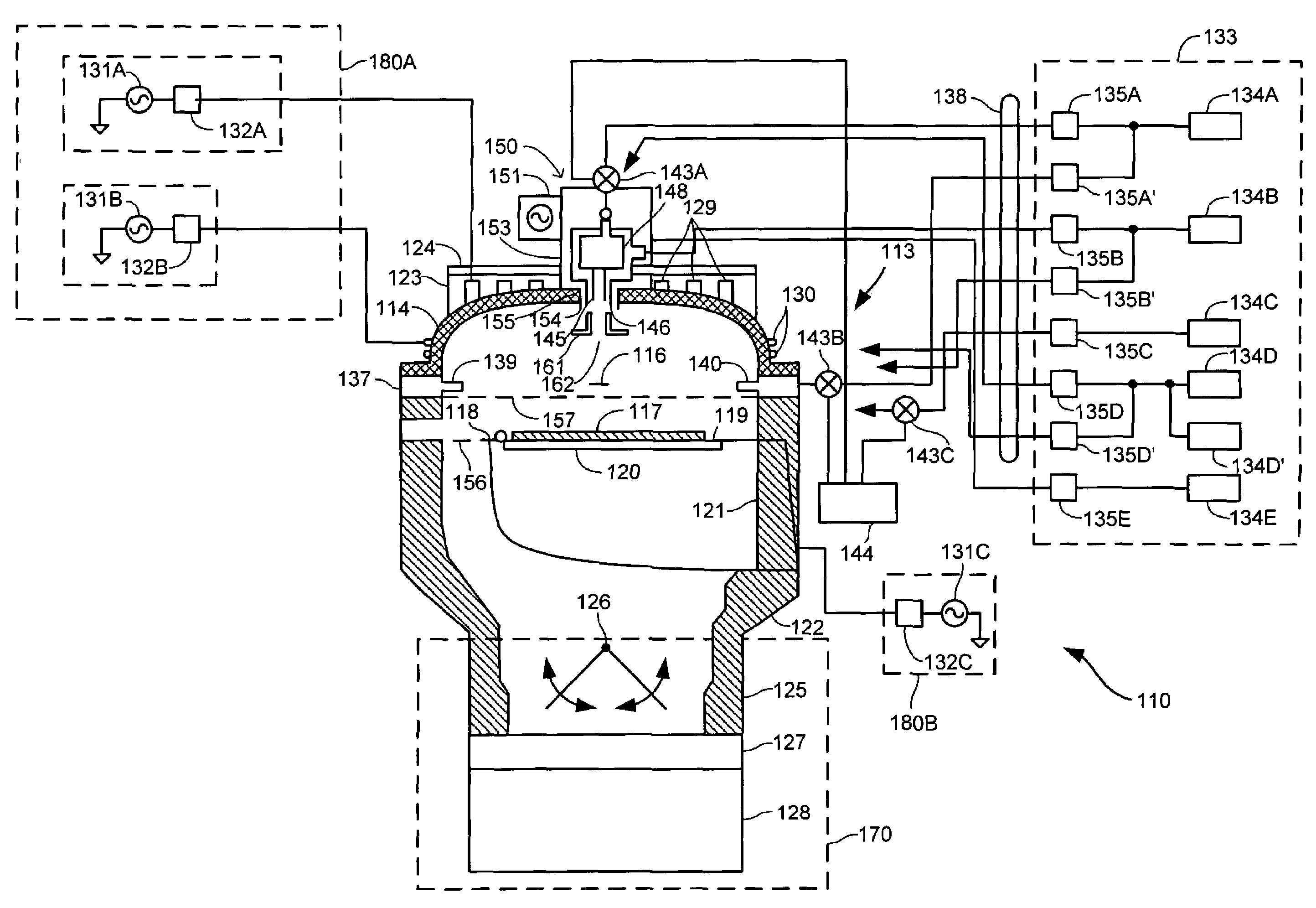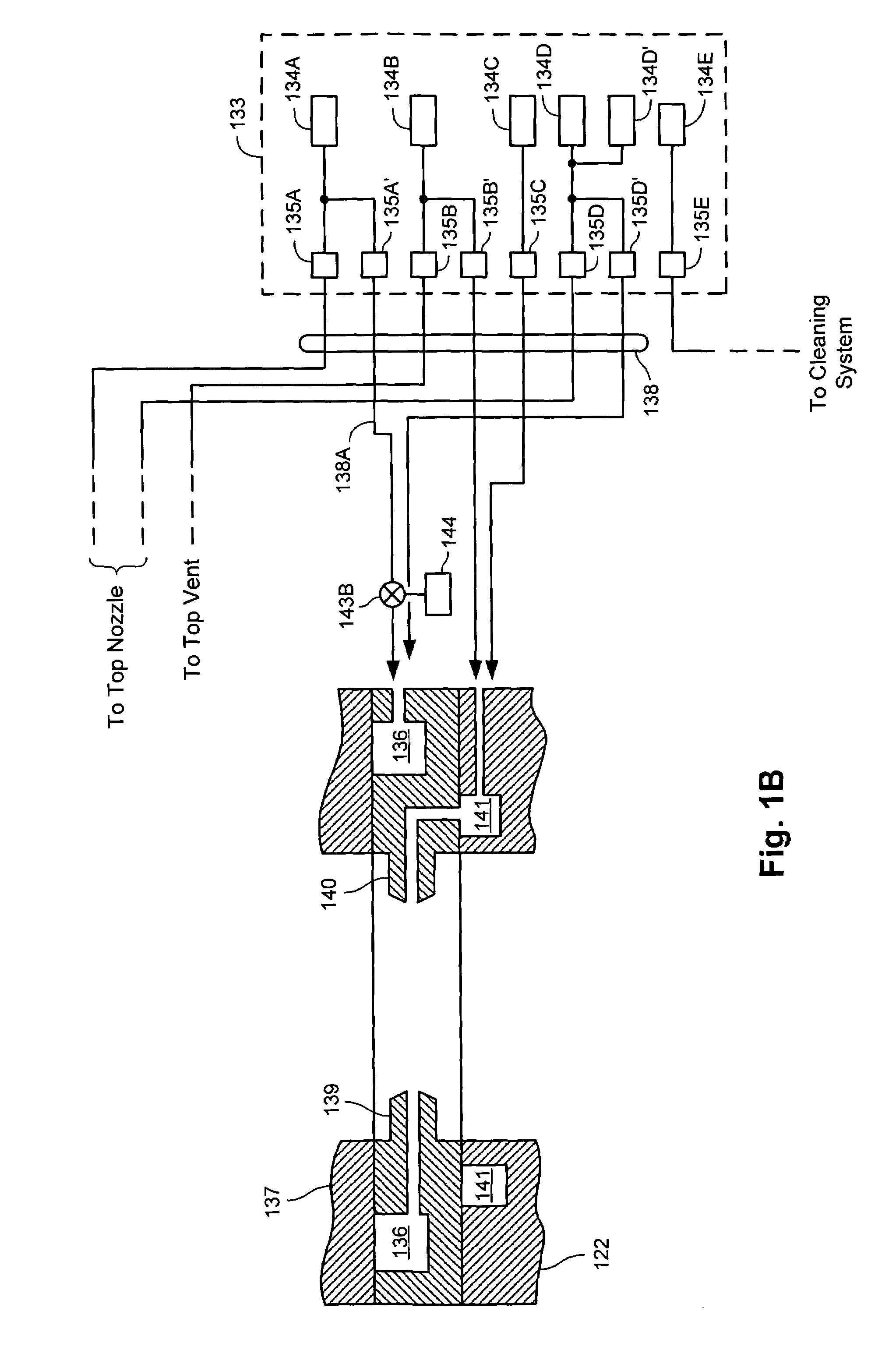Low-frequency bias power in HDP-CVD processes
a technology of cvd process and low-frequency bias, which is applied in the direction of vacuum evaporation coating, plasma technique, coating, etc., can solve the problems of arcing within the chamber, poor gapfill ability, and difficult to completely fill high-aspect-ratio gaps using conventional cvd techniques, so as to reduce the risk of bias discharge and enhance the tuning speed of the bias system
- Summary
- Abstract
- Description
- Claims
- Application Information
AI Technical Summary
Benefits of technology
Problems solved by technology
Method used
Image
Examples
Embodiment Construction
[0020]The inventors have recognized that the risk of bias discharge during HDP-CVD processes may be reduced by operating an rf bias generator at lower frequencies. Current HDP-CVD systems typically operate rf bias generators at a frequency of about 13.56 MHz, a value that has been chosen primarily to avoid frequency bands that are commonly used for commercial and military applications. Besides changing ion energy and angle distributions in the plasma, the reduction of bias frequency is also believed to influence coupling RF power with ions in plasma such that lower chamber pressures and higher biases may be used. In particular, the response capability of ionic species is limited so that individual ions do not respond to the bias field as effectively when the field changes rapidly. When higher frequencies are used, the power coupling with the ions is thus relatively inefficient, leading to heating of the plasma. The combination of the high density of the plasma with an elevated plasm...
PUM
| Property | Measurement | Unit |
|---|---|---|
| frequency | aaaaa | aaaaa |
| frequency | aaaaa | aaaaa |
| power | aaaaa | aaaaa |
Abstract
Description
Claims
Application Information
 Login to View More
Login to View More - R&D
- Intellectual Property
- Life Sciences
- Materials
- Tech Scout
- Unparalleled Data Quality
- Higher Quality Content
- 60% Fewer Hallucinations
Browse by: Latest US Patents, China's latest patents, Technical Efficacy Thesaurus, Application Domain, Technology Topic, Popular Technical Reports.
© 2025 PatSnap. All rights reserved.Legal|Privacy policy|Modern Slavery Act Transparency Statement|Sitemap|About US| Contact US: help@patsnap.com



